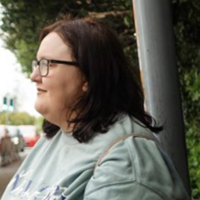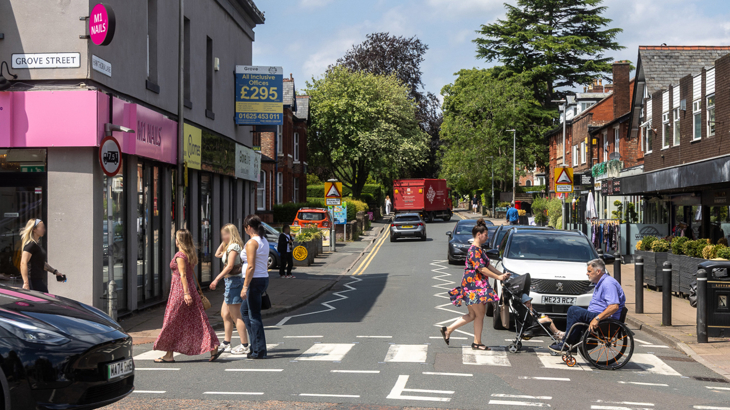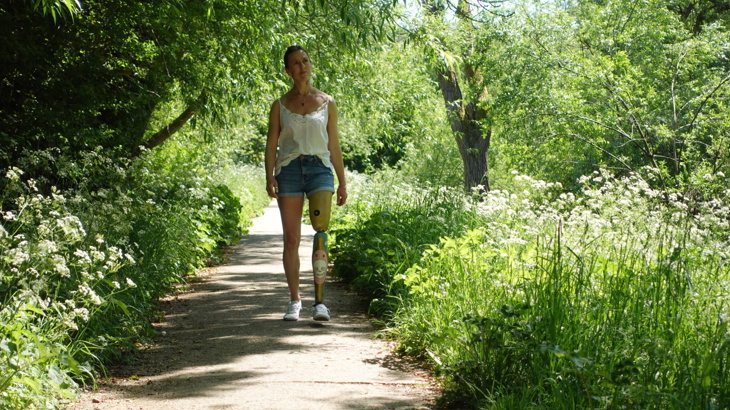Transforming Mobility is a Sustrans project with Transport for All, funded by the Motability Foundation, understanding how to better include disabled people in transport planning. Through research and engagement in the UK and Belgium, it's exploring how cities can improve accessibility by involving disabled people in decision-making.
Our project has brought together disabled people from all over the UK to understand the changes they want to see. Footage: Tom Hughes
Making transport work for disabled people
Disabled people are being left out.
Over half (53%) of disabled people say the government isn’t doing enough to help them be active or access nature.
Nearly the same number (48%) say transport isn’t affordable, and half feel that both local and national governments aren’t prioritising accessibility.
Our report highlights five big ideas already gaining momentum in the UK, with the potential to shape transport over the next five to 10 years.
Throughout the project, disabled people shared clear, practical recommendations to make sure these ideas truly represent their needs and lead to better, fairer outcomes.
The five big ideas are:
-
Rebalance street space.
-
Create mobility hubs linking walking, wheeling, cycling, and public transport.
-
Roll out side road zebra crossings across the UK.
-
Cut car parking to clear pavements.
-
Pay disabled people to become members of access panels and advise on local transport decisions.
Where do the findings come from and how are disabled people represented in the research?
Disabled people were central to this research, from shaping the project to sharing their experiences.
The work was led by disabled team members at Sustrans and Transport for All, and involved over 40 disabled people in workshops, bringing in a wide mix of backgrounds, conditions, and locations.
We also worked with More in Common to run a nationally representative survey, completed by 1,107 disabled adults across the UK.
Respondents were screened to reflect a range of impairments, and the data was carefully weighted to match the wider disabled population.

Hazel, West Midlands
For the buses around here, sometimes I've waited at the interchange for about an hour and a half.
If I’ve had a few days where the bus services are so bad and I know that I have to get to a certain place like a doctor's appointment, at that point, I’m like, “forget it, I’ll just get a taxi”, because I don’t even trust the bus service, or I’m just exhausted.
And that can be expensive. So, it’s not just planning for your trip mentally, but financially as well.
Our five big ideas
1. Balance street space
Our streets are mostly designed around cars. Councils should plan street space in a way that supports walking, wheeling, cycling, and public transport through Street Allocation Frameworks and Traffic Circulation Plans, for instance.
This means taking space from cars on some streets and giving it to other ways of getting around, while still keeping access for people who need to drive. Most disabled people support this approach.
2. Make it easier to walk, wheel or cycle to the bus, train or tram
Changing between different types of transport should be simple. Mobility hubs bring things together in one place, like a bus stop next to a train station, with bike parking and accessible walking routes.
They also work better when they include public toilets, seating and shelter. Disabled people want these hubs to be easy to get to and use.
3. Prioritise people crossing side roads
Since 2022, the Highway Code says drivers should give way to people waiting to cross side roads. But this isn't happening.
Side road zebra crossings are a cheap and simple way to fix this. They are already used across Europe. When tested in UK cities, more drivers stopped and disabled people felt safer. Councils should be allowed to install them more widely.
4. Manage parking to free up public space
Too much street space is taken up by car parking. Reducing this can make room for benches, trees, bike parking, and wider pavements. It can also help remove clutter from footways.
Any changes must protect access for disabled people who need to park. Nearly half of disabled people support removing some visitor parking to improve public space.
5. Access panels to inform local transport policy
Disabled people should be paid to help shape local transport decisions. Access panels are formal groups of disabled people who advise councils on policies and projects. This leads to better outcomes and helps avoid mistakes.
A national network could support these panels with training and resources. A version of this already exists in Scotland.
53%
say the government isn’t doing enough to help them be active or access nature
48%
say transport isn’t affordable

Credit: Chris Foster
Why is disabled representation important?
The National Travel Survey shows disabled people take 25% fewer trips than non-disabled people in England.
Disabled people often experience greater barriers to mobility and find existing transport much more challenging than non-disabled people in the UK.
For example, 41% of disabled people often experience problems reaching their destination during typical walking or wheeling journeys due to accessibility. This can limit transport choice, reduce access and increase social isolation.
When disabled people are actively engaged within the development of transport policy and practice their needs are likely to be part of these plans as opposed to being ignored or over-looked.

Credit: Sustrans







